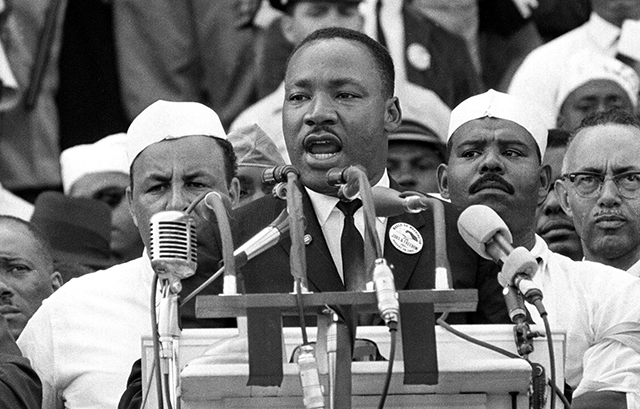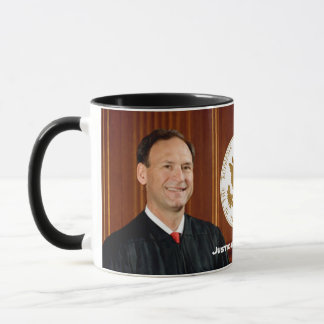Last week’s Supreme Court arguments featured the Fourth Amendment, voting rights, and disputes between states over water. On Monday, the Court heard arguments about two Fourth Amendment cases involving vehicles. First, the Court heard Byrd v. United States in which the issue was whether, under the Fourth Amendment, the driver of a rental car whose name is not on the rental agreement but has permission of the renter has a reasonable expectation of privacy. Byrd argued that a rental car agreement is not determinative of the scope of a driver’s constitutional rights. And as the American Civil Liberties Union argues in an amicus brief it submitted with the National Association of Criminal Defense Lawyers, the government’s position that drivers unauthorized by the rental car companies have no Fourth Amendment rights would have a disproportionate effect on black and Hispanic drivers, who are more likely to rent cars than white people. The New York Times reports on that brief and other arguments.
As The New York Times also reports, during oral argument, however, Justice Kennedy described how Byrd waited outside of the rental facility while his girlfriend signed the agreement. Justice Kennedy said that it seemed as though he didn’t want to have his name on the rental agreement even though it appeared as though he would be the only one driving the rental car.
In the other Fourth Amendment case, Collins v. Virginia, the Court was asked to consider the scope of the Fourth Amendment’s “automobile exception,” which allows a police officer to search a vehicle without first getting a warrant to do so if the evidence of criminal activity could be removed from the premises because of the vehicle’s mobility. Collins argued that the automobile exception should not apply when the vehicle is parked in the “curtilage,” nor area surrounding the home. Vice.com predicted that a win for Virginia in this case “could dramatically curtail the protections of the Fourth Amendment. And Reason.com notes, unsurprisingly, that “several justices seemed skeptical of Virginia’s reasoning.” The justices may not reach the underlying issue, however, Towards the end, the attorney representing Virginia admitted that the intermediate state appellate court decided the case on the grounds that there were exigent circumstances. In response, Justice Ginsburg said that the Virginia Supreme Court had not addressed this question, and so the Supreme Court might have to remand the case because they could not take on that issue.
In the first water rights case of the week, Texas v. New Mexico and Colorado, the Court heard oral arguments over a dispute about water allocation from the Elephant Butte Reservoir between Texas, and New Mexico and Colorado. Governed by the language of Rio Grande Compact, the states must adhere to the specific language of all signatories of the document, of which the federal government is not included. The specific issue before the Court had to do with whether the federal government can nonetheless intervene in the lawsuit.
National Public Radio affiliate KUNM broke down the history of this case and recounted this week’s oral argument. Aside from the question of federal intervention, this case has much history behind it; from Western water rights to “the role Reclamation plays in both Texas and New Mexico.” KUNM notes that the stake are high. New Mexico “has already spent $15 million on staff and legal fees. And if the Supreme Court decides in favor of Texas, New Mexico could owe a billion dollars or more in damages and be forced to curtail groundwater pumping…”
In its second water rights case of the week, the Court heard arguments in Florida v. Georgia. This case involves Florida suing the state of Georgia over their consumption of water in the Apalachicola-Chattahoochee-Flint basin. Florida argues that the Army Corps of Engineers, which controls several federal dams flowing into the basin, should allocate more water to Florida to assist freshwater fisherman in preventing droughts, thus hurting business.
The special master–appointed by the Supreme Court, tasked to study water allocation among the rivers that flow into the basin–concluded that Florida was hurt by not having enough water but did not have enough evidence to prove that water reallocation from Georgia would alleviate the issue. During oral arguments, the Washington Post reports, Justice Kagan seemed sympathetic to this conclusion this claim, stating to the lawyer representing Florida that “there seems to be a real dearth of record evidence specifically quantifying how much more water you would have gotten, exactly what benefits would have followed from that.” On the other hand, Chief Justice Roberts commented that a ruling for Florida will help build a case as to why the state should be allocated more water. However, the looming question before the Court and both states is the gauntlet of federal statutes and congressional mandates that the Corps must obey to meet its obligations as the de facto managers of water allocation for the basin.
Finally, on Wednesday, the Court heard oral arguments in Husted v. A. Philip Randolph Institute, which addresses the merits of an Ohio law that removes voters from the rolls. We’ll cover that argument in more detail in a separate post.
This post was drafted by ISCOTUS Fellow Zoe Arthurson-McColl, Chicago-Kent Class of 2020, and was edited by ISCOTUS Editorial Coordinator Anna Jirschele, Chicago-Kent Class of 2018. It was overseen by ISCOTUS Co-Director and Chicago-Kent faculty member Carolyn Shapiro.



